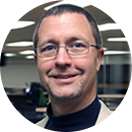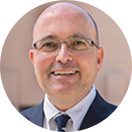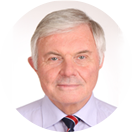- Date: April 28, 2019 (Sun)
- Location: Sicily room → Capri Room, 2nd Floor, Paradise Hotel Busan
| Time | Title |
| 08:30 - 09:00 | Registration |
| 09:00 - 10:40 | Lecture 1 : Vacuum Electronic Linear Beam Tubes (Prof. John Booske, Univ. of Wisconsin, USA) |
| 10:40 - 10:55 | Coffee Break |
| 10:55 - 12:35 | Lecture 2 : Crossed-Field Devices (Prof. Edl Schamiloglu, Univ. of New Mexico, USA) |
| 12:35 - 13:50 | Lunch |
| 13:50 - 15:30 | Lecture 3 : Fast-Wave Microwave Devices (Prof. Manfred Thumm, Karlsruhe Institute of Technology, Germany) |
| 15:30 - 15:45 | Coffee Break |
| 15:45 - 17:25 | Lecture 4 : Free Electron Lasers; from Terahertz to X-rays (Prof. Kwang-Je Kim, Univ. of Chicago &Argonne National Lab, USA) |
* Attendees at mini-course can obtain an IEEE Certificate that offers Continuing Education Unit (CEU) for attending. An IEEE Certificate is a guarantee of educational quality and a credential that engineers can proudly share. In order to receive this you would need to make sure you fill out an evaluation form onsite and hand it back in to the IVEC registration desk.
Lecture 1 Linear Beam Devices and Slow Wave Devices

Prof. John Booske
Univ. of Wisconsin, USA
This lecture will compare and contrast vacuum electronic and solid state electronic high frequency devices. It will then present an overview of linear beam tubes such as klystrons, traveling wave tubes and their derivatives. The beam wave interaction mechanism and the physics of electron bunching and energy extraction will be discussed. Finally, the state-of-the-art in such devices and their recent advances will be discussed.
Lecture 2 Crossed-Field Devices

Prof. Edl Schamiloglu
Univ. of New Mexico, USA
The invention of the cavity magnetron in 1940 and the subsequent development of radar and industrial applications are considered a "major innovation" according to the definition often used by technology historians. Today, industrial cavity magnetrons abound and routinely operate reliably with beam-to-microwave conversion efficiencies exceeding 80%. This lecture will review crossed-field devices arcing from the cavity magnetron in 1940 to the relativistic magnetron which in recent simulations have suggested operating with 92% efficiency.
Lecture 3 Fast-Wave Microwave Devices

Prof. Manfred Thumm
Karlsruhe Institute of Technology , Germany
This lecture will cover an introduction to fast-wave microwave devices such as gyro-oscillators, gyro-amplifiers, and free electron masers. The beam wave interaction mechanism, physics of electron bunching and energy extraction will be discussed. The development of continuous wave gyrotrons with megawatt level power for use in heating, non-inductive current drive and diagnostics of fusion plasmas will be presented. The lecture will also cover the development of terahertz gyrotrons for use in novel applications such as in spectroscopy and the use of gyro-amplifiers in millimeter-wave radar.
Lecture 4 Free-Electron Lasers; from Terahertz to X-rays

Prof. Kwang-Je Kim
Univ. of Chicago & Argonne National Lab, USA
Free-electron lasers (FELs) are based on stimulated emission by "free" electrons making a sinusoidal motion in an undulator, which is a magnetic device producing periodic field of alternate polarities. Since electrons are not bound in an atomic or molecular system, an FEL is tunable and can work for an arbitrary photon energy if electron beams of suitable qualities are available and a matching undulator can be constructed. To date, FELs have been built for microwaves to X-ray wavelengths. Although the basic principles of FEL can be explained by quantum mechanics, practical calculations are easier with classical mechanics. We plan to cover the following topics: relativity and undulator radiation (UR); criteria for radiation coherence; radiation-electron beam interaction in an undulator giving rise to an FEL gain; the relation between the radiation wavelength and requirements on electron beam quality for FEL operation; FEL oscillators for IR to UV wavelengths; the advance in the electron gun technology during the last several decades and how a high-gain X-ray FEL producing self-amplified spontaneous emission became possible recently. A hard X-ray FEL using Bragg crystal reflectors is currently under development. Finally, we will mention Terahertz FELs employing non-relativistic beams and a grating (Smith-Purcell FEL) or a dielectric material (Cherenkov FEL) in place of an undulator.

